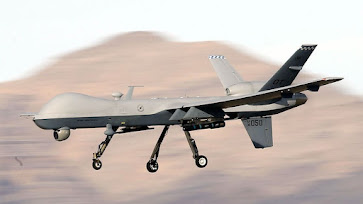Drones are also known as Unmanned Aerial Vehicles (UAVs), they are becoming popular in various industries, and our everyday life. Drones can also be called unmanned aircraft and are controlled by an operator on the ground, using a remote control or controlled by automation using software.
Little quadcopters to massive fixed-wing military aircraft, drones come in a wide variety of sizes, forms, and functions.
We shall talk about the many drone types, their applications, and their effects on society in this post.
Drones can be divided into various categories based on how they are built, how big they are, and what they can do. The most typical varieties of drones are: drones with fixed wings These drones are built similarly to conventional airplanes with fixed wings. They are more effective than other drone varieties since they use less power to fly and can travel farther. For mapping, surveying, and monitoring huge regions, including agricultural fields or wildlife reserves, fixed-wing drones are frequently used.
Quadcopters: Quadcopters, also known as quadrotors, have four rotors that enable them to hover in place and fly in any direction. They are often used for aerial photography, search and rescue operations, and recreational purposes.
Hexacopters: Hexacopters have six rotors and are more stable than quadcopters, making them ideal for aerial photography and videography. Octocopters: Octocopters have eight rotors and are the most stable type of drone. They are often used for professional filmmaking and cinematography.
Uses of Drones
Drones are used in various industries and applications, including:
Aerial Photography and Videography: Drones equipped with high-quality cameras are used for aerial photography and videography, providing a unique perspective and capturing stunning images and footage.
Search and Rescue Operations: Drones equipped with thermal imaging cameras and other sensors can be used to locate missing persons or stranded hikers in remote areas, assisting search and rescue teams.
Agriculture: Drones are used in agriculture for mapping, surveying, and monitoring crop health. They can also be used for precision farming, where they apply pesticides and fertilizers to crops with accuracy, reducing waste and improving crop yields.
Construction and Surveying: Drones can be used for mapping and surveying construction sites, providing accurate data and reducing the time and cost of traditional surveying methods.
Wildlife Conservation: Drones equipped with cameras and sensors are used to monitor and track wildlife, such as elephants and rhinos, to prevent poaching and protect endangered species.
Impact of Drones on Society
Both good and bad effects of drones on society have been felt. On the plus side, drones have enhanced agricultural techniques and supported disaster relief efforts while saving lives during search and rescue operations. In the drone sector, they have also produced new employment prospects for pilots, engineers, and data analysts. On the negative side, privacy and security are issues that have been brought up by drones. Drones with cameras have the potential to violate people's privacy, and they can also be used for illegal purposes like smuggling drugs into jails or delivering explosive devices.
Public safety is at risk because drones have been known to crash and collide with other aircraft.
Control of Drones
Governments all over the world have put in place restrictions to limit the use of drones due to the possible risks involved. Some laws forbid flying drones over a specific altitude, close to airports, or in populated areas. To use drones for business purposes, pilots must also obtain a license and follow stringent safety regulations.
Conclusion
Drones are employed in many different fields and applications and are growing in popularity. They have the capacity to increase effectiveness, save lives, and safeguard



No comments:
Post a Comment